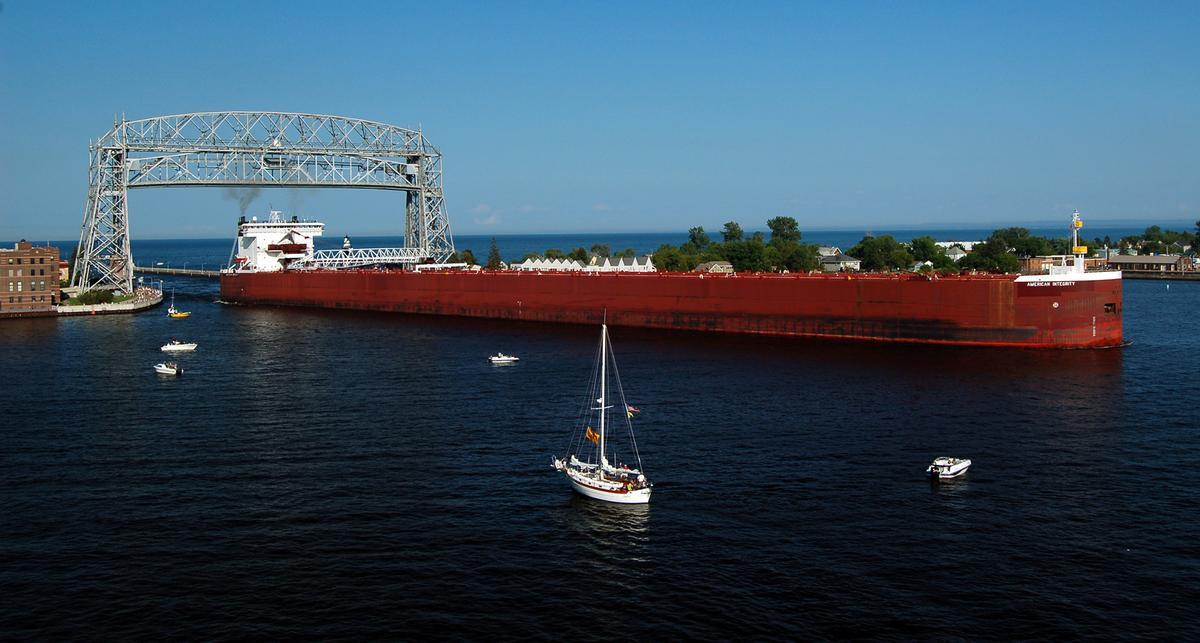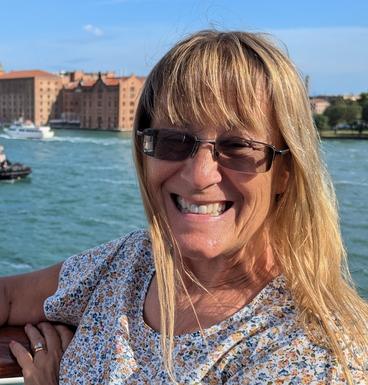
Image credit: Minnesota Sea Grant.
Great Lakes Shipping 101 is designed to be a resource for anyone seeking information about the Great Lakes maritime transportation system and the Port of Duluth-Superior. The information here is not exhaustive; it is a curated list of resources selected by Minnesota Sea Grant's Great Lakes Transportation Extension Educator Kelsey Prihoda.
Great Lakes Panel on Aquatic Nuisance Species. One of six regional panels that report to the federal Aquatic Nuisance Species Task Force, this binational panel coordinates education, research, management, and policy efforts to prevent new aquatic nuisance species from entering the basin and to control and mitigate already established populations.
Great Lakes Ballast Water Research and Development Plan (Prihoda et al., 2020). Produced by the U.S. Department of Transportation’s Maritime Administration and the University of Wisconsin-Superior’s Lake Superior Research Institute, the goal of this plan is to identify the most effective methods of reducing the environmental risk associated with the ballast water vector from vessels operating within the Great Lakes System.
Great Waters Research Collaborative. A project of the University of Wisconsin-Superior’s Lake Superior Research Institute focused on the prevention of new ballast water introductions of invasive species to the Great Lakes.
Duluth Seaway Port Authority. The Port of Duluth-Superior is a diversified multimodal shipping hub, offering global cargo transport through the Great Lakes - St. Lawrence Seaway, free-flowing major highways and direct Class I rail service to the East, West and Gulf Coast.
Economic Impacts of Maritime Shipping in the Great Lakes - St. Lawrence Region (Martin Associates, July 2018). Maritime commerce on the Great Lakes and St. Lawrence River is critical to the economies of the United States and Canada. This study seeks to measure and evaluate that commerce and present a description of its economic impacts. Because of the geographic scope of the study area and the diverse stakeholders who might make use of this data, the study presents its results in numerous ways and from many perspectives.
Saint Paul Port Authority. The Minnesota Legislature established the Saint Paul Port Authority as a nonprofit governmental agency in 1929 to manage the Saint Paul Harbor.
Great Lakes Maritime Academy (Traverse City, Michigan). The only state maritime academy located on the Great Lakes.
Great Lakes Maritime Careers. Created by the Great Lakes Commission, this website provides information on how to become a mariner and shares current job opportunities in the maritime industry.
The Economic Value of the Cruise Industry to the Duluth-Superior Metropolitan Statistical Area (University of Minnesota Duluth Bureau of Business and Economic Research, July 2021). Study estimating the direct and indirect economic benefits to the city of Duluth and surrounding region from the development of a cruise industry.
Great Lakes Cruise Association (GLCA) website. The GLCA promotes cruise tourism in the Great Lakes, and its website contains current information on all available Great Lakes cruise lines and destinations.
January 31, 2024. Watch Melissa Bosman - Dredging Program Manager, Detroit District Army Corps of Engineers - present the Beneficial Use of Dredged Material Webinar. Learn about The Dredge Materials Decision Tool, presented by Kathleen Williams and Sebastian Pczuski - U.S. Environmental Protection Agency.
Exploring science-based strategies for environmental dredging windows in Lake Michigan (Great Lakes Commission, 2021). Proceedings of a virtual symposium and workshop held on April 28 - 29, 2021, to bring together natural resource, environmental protection, and fishery management agency personnel from the four Lake Michigan states to share processes for establishing environmental windows.
Chamber of Marine Commerce. Binational association representing marine industry stakeholders, including ship owner/operators, ports, terminals, and industrial shippers.
Chamber of Marine Commerce. Great Lakes - St. Lawrence River Shipping.
Great Lakes St. Lawrence Seaway System. Managed by the St. Lawrence Seaway Management Corporation (headquartered in Cornwall, Ontario, Canada) and the Great Lakes St. Lawrence Seaway Development Corporation (U.S. Department of Transportation, headquartered in Washington, D.C.).
Great Lakes Marine Transportation System (Stewart, R.D., no date). White Paper Prepared for the Midwest Freight Corridor Study.
Lake Carriers’ Association. Represents and promotes the common interests of U.S.-flag vessel operators on the Great Lakes.
The Great Lakes Seaway Partnership. Binational program working to enhance public understanding of the benefits of Great Lakes - St. Lawrence Seaway shipping.
BoatNerd website. News, vessel locations, vessel photo gallery, and message board for individuals interested in Great Lakes - St. Lawrence Seaway shipping.
Harbor Lookout website. Ship tracking for the Port of Duluth-Superior, operated by the Lake Superior Marine Museum Association.
Marine Traffic website. Global ship tracking.
Environmental and Social Impacts for Marine Transport in the Great Lakes - St. Lawrence Seaway Region (Gordon English and David C. Hackston, January 2013). Study examines the external impacts of the maritime transportation system in comparison to rail and truck freight transportation.
The Environmental Footprint of Surface Freight Transportation (Lawson, 2007). Transportation Research Board Special Report 291, paper analyzes environmental effects of shipping from ocean-going vessels trading in the Great Lakes and surface transport conditions within the Great Lakes - St. Lawrence region.
Multimodal Freight Transportation within the Great Lakes - St. Lawrence Basin (National Academies of Sciences, Engineering, and Medicine, 2012). Description of the multimodal freight transportation system within the bi-national Great Lakes - St. Lawrence Basin, its economic importance, and the efficiency of maritime transportation.
Program Staff
Program News

This position has been filled.

